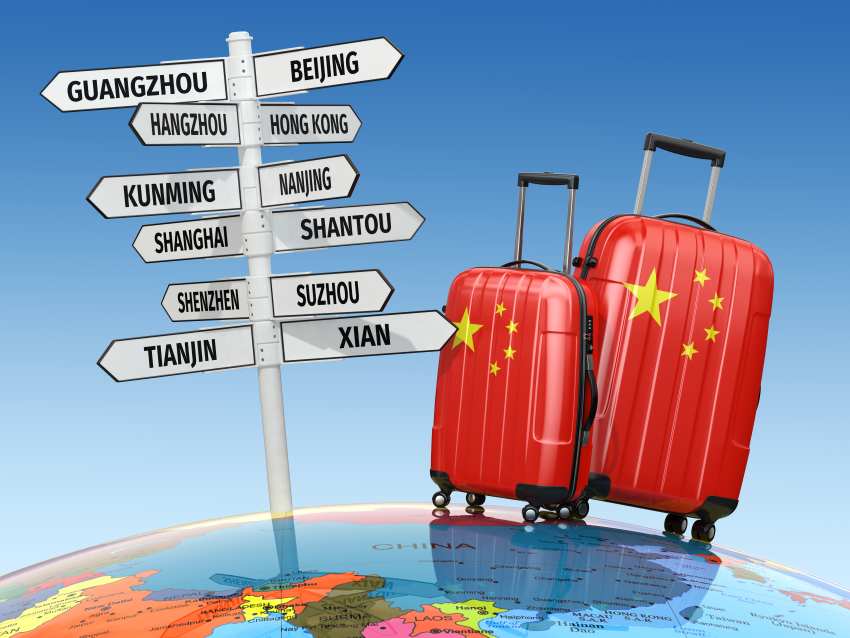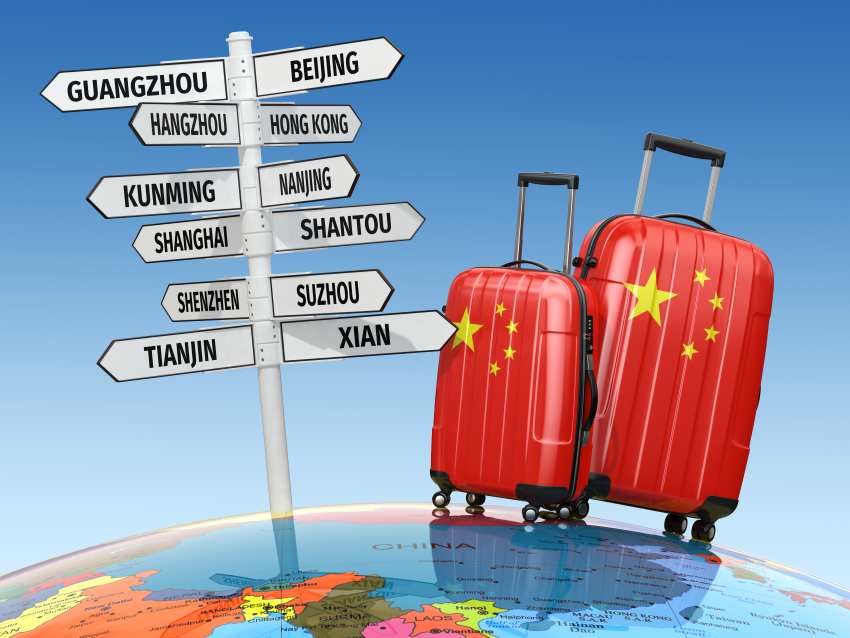
China is once more flexing its muscles as the tourism industry changes across the globe. The latest ITB China Travel Trends Report for the years 2025 and 2026 focuses on the emerging factors shifting the country’s travel patterns, providing a thorough analysis of travel trends, population changes, the growing influence of artificial intelligence, and the evolution of travel habits.
Together with industry specialists and leading travel agencies, the report analyzes how changes in consumer behavior, technological innovations, and spatial tourism policies are merging to shift tourism in China. It also highlights the steps businesses globally should implement to capitalize on the revived interest stemming from one of the largest travel hubs.
China’s Outbound Travel Demographics
An essential centerpiece of the report is the changes in the demographics of China’s outbound travel market. Outbound travel is primarily driven by individuals born in the 1980s and 1990s, and this group now accounts for nearly 70% of those traveling abroad. This older segment of the younger generation is more tech-savvy and values experiences, and now seeks more flexibility, customization, and deeper engagement with various forms of travel.
Alongside this younger wave is the new phenomenon of “active seniors.” The 100 million Chinese seniors aged 60 or older are now spending their money on international travel. These travelers are projected to exceed spending of over 1 trillion CNY during 2025, indicating a massive new shift in the global economy. These changes also signify an increase in the amount of services provided to seniors and the younger generation. To put this in simpler words, people from both ends of the age spectrum are now wanting to travel and spend money.
Millennials and Gen Z travelers are unmistakably on the lookout for social media fueled adventures and authentic experiences. While older travelers prefer comfort, wellness, and safety while traveling. This mix of both younger and older travelers offers global tourism a chance to create flexible travel packages and tiered experiences for everyone.
Rise of Personalized and Emotionally Driven Travel
As noted in the report, emotionally fulfilling, and lifestyle-oriented travel is on the rise indicating a the moving away from rigid group tours. The rise of emotionally fulfilling travel goes in hand with a greater connection with cultures and nature. Chinese travelers are increasingly showing liking for things like food trails and other in depth cultural workshops. The message is clear, no matter what age, travel is increasingly personalized and meaningful.
The need for personalization is already shifting industry behavior. Over 80 percent of travel businesses offer customized itineraries. However, nearly 50 percent still offer traditional seat-in or small group tours. This mix of flexible, high touch and low touch service models paired with legacy systems is what marks the current phase of the market.
Reconciling traveler independence with logistical challenges such as language barriers, time constraints, and visa restrictions remains a hurdle. Those who can overcome practical hurdles in delivering customized travel, personalized service, and effortless travel will define the next era of travel innovation.
The New Hybrid Travel Model
With advances in technology, a new hybrid travel model is being adopted. This model incorporates the self-sufficiency of self-guided travel with the structure of organized tours. It provides independence to travelers without sacrificing convenience.
For instance, modular itineraries, app-guided tours, and AI-generated personalized travel recommend tailored experiences to the growing use of local concierges, destination ambassadors, and immersive mobile content as local guides. This shift to traveler empowered design demonstrates the agile nature of modern travel.
This model also benefits destinations which lacked the infrastructure for traditional tours. These regions can now appeal to independent travelers and design customized services using scalable digital systems.
Bleisure Travel: Where Business Meets Exploration
Business trips are no longer a one-way street to attend a conference and return home. A major trend identified in the report is the increase in bleisure— a fusion of travel and leisure. About 80% of the respondents are in consensus this segment is poised to grow, particularly where companies are investing in the employee experience and team member well-being.
The shift of corporate travel is concentrating more on value creation than cost-cutting. Business destinations and venues are now required to provide unique cultural, leisure, and wellness offerings along with official business services.
Changes in this direction shape the way companies design retreats, meetings, and incentive trips. Family vacations are termed ‘workations’ when extended to include family time, which is now common, and is a welcomed trend. In the near future, venues that offer conference facilities alongside the local unrivaled experiences will have a clear advantage.
AI in Travel: Opportunities and Allure
AI is one of the forces behind the transformation in the travel sector. Over half of the travel businesses surveyed claim to already implement AI solutions. Its application covers personalized product recommendations and itinerary builders to customer support AI and market prediction analysis.
AI technology is changing the travel sector for the better, especially for Chinese international tourists, by providing services like AI-assisted translations, smart routing, and adaptive content. These services lessen the burden international travel poses due to language and cultural challenges.
AI technology still has to deal with the challenge of making sure services that focus on humans are kept. The human touch is essential, for segments that deal with luxury and experiences, for services that are warm and nuanced. The focus should be on using AI technology to improve personal service, and not the other way around.
China’s Inbound Tourism: A Sector on the Rise
The news is full of stories regarding the outbound tourism, but inbound tourism is on the rise too. Increased international arrivals is spurred on by restoring air capacity, visa policies, and the enhanced infrastructure of the destinations. In other regions of China, the preparation enhancement includes multilingual signs, transit systems, and specially designed experiences for international tourists.
International tourists to China are exhibiting the same trends as outbound Chinese travelers. These travelers are showing more interest in authentic experiences, depth of the culture, and less popular places. The FIT traveler trends are influenced by mobile applications, social media, and user-generated content.
In addition, legacy source markets are being joined by new markets. The response time of tourism boards and travel operators to detect and act on signals of demand will be critical in determining who captures the next wave of inbound growth.
Reimagining the Tourism Ecosystem
The report, in the wider context of the global tourism ecosystem, sees the evolution of travel in China as a mark of the transformation China is causing in the ecosystem. From growth driven by outbound travel by millennials and baby boomers to AI service, and from new market activity to a blend of business and leisure, China is as much an originator as it is a responder.
To maintain an edge, global destinations, tour operators, and travel tech players need to redesign their engagement strategies. It is also apparent that effective travel and tour marketing is more than a mere default to offering bundle packages. It is focused experiencing crafted around lifestyle, identity, purpose, and personal tailored interactions.
As travelers are not just seeking to engage in sightseeing and as businesses are looking to offer better value and a lower volume, the next evolution of tourism will be directed by meaningfully innovative strategies that are swiftly adapted to changes.
Travel and Tourism Outlook: Upcoming Directions
The next phase of travel expansion in China will simultaneously present opportunities for tourism across every vertical of travel. Domestic service providers will have to deal with more nuanced demand in the form of tiered and differentiated travel. Global destinations will have to rethink how they interface with the Chinese and build cultural bridges to welcome and engage with them more holistically.
Technology will be the bringer of desire and channel to demand delivery, though it must be paired with authentic travel experiences to be effective. AI will only have paramount efficacy if it draws from cultural intelligence and human intelligence design.
The demographics will still be in continual flux. There will be a shift in the the global youth population that favors cause-centric travel. The older population will demand comfort and added security measures. Corporate fliers will look for seamless and purposeful travel that support wellness. All of them will expect in their travel speedy and experience driven servic, hyper-personalization, and a bespoke itinerary.
The key message is tourism leaders need to flex, adapt, and diversify their offerings while maintaining the core of what their business stands for. China tourism’s future is not simply recovery, but a redesign blending data and empathy, automation and authenticity, and a global and local perspective.During this period of global uncertainty and change, the travel sector in China is not just recovering, but is also transforming at a breathtaking pace. The ITB China Travel Trends Report offers a glimpse of future developments and showcases the change that is happening in the sector because of the travelers. It encapsulates the journey from outbound to inbound tourism, the use of AI, the shift to personal interactions, and purposeful and intentional innovation in travel.
The post ITB China 2025-26 Travel Trends Report Highlights Demographic Shifts, Bleisure Boom, AI’s Role and Rising Inbound Travel Driving China’s Tourism Expansion: Latest Updates Only For You appeared first on Travel And Tour World.”}]] [[{“value”:”ITB China 2025-26 Travel Trends Report Highlights Demographic Shifts, Bleisure Boom, AI’s Role and Rising Inbound Travel Driving China’s Tourism Expansion: Latest Updates Only For YouITB China’s report outlines 2025–26 tourism trends shaping China’s travel industry, from outbound shifts to AI, bleisure, and inbound growth.
The post ITB China 2025-26 Travel Trends Report Highlights Demographic Shifts, Bleisure Boom, AI’s Role and Rising Inbound Travel Driving China’s Tourism Expansion: Latest Updates Only For You appeared first on Travel And Tour World.”}]]  Read More CHINA TRAVEL NEWS, Latest Travel News of China, TRAVEL TRENDS AND FOCUS, AI in China tourism, bleisure tourism China growth, China travel trends 2025, Chinese outbound travel 2025, inbound tourism China strategies TRAVEL TRENDS AND FOCUS – Travel And Tour World
Read More CHINA TRAVEL NEWS, Latest Travel News of China, TRAVEL TRENDS AND FOCUS, AI in China tourism, bleisure tourism China growth, China travel trends 2025, Chinese outbound travel 2025, inbound tourism China strategies TRAVEL TRENDS AND FOCUS – Travel And Tour World



